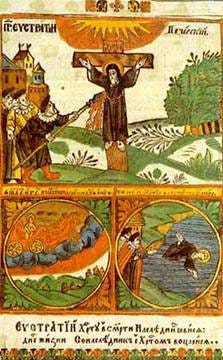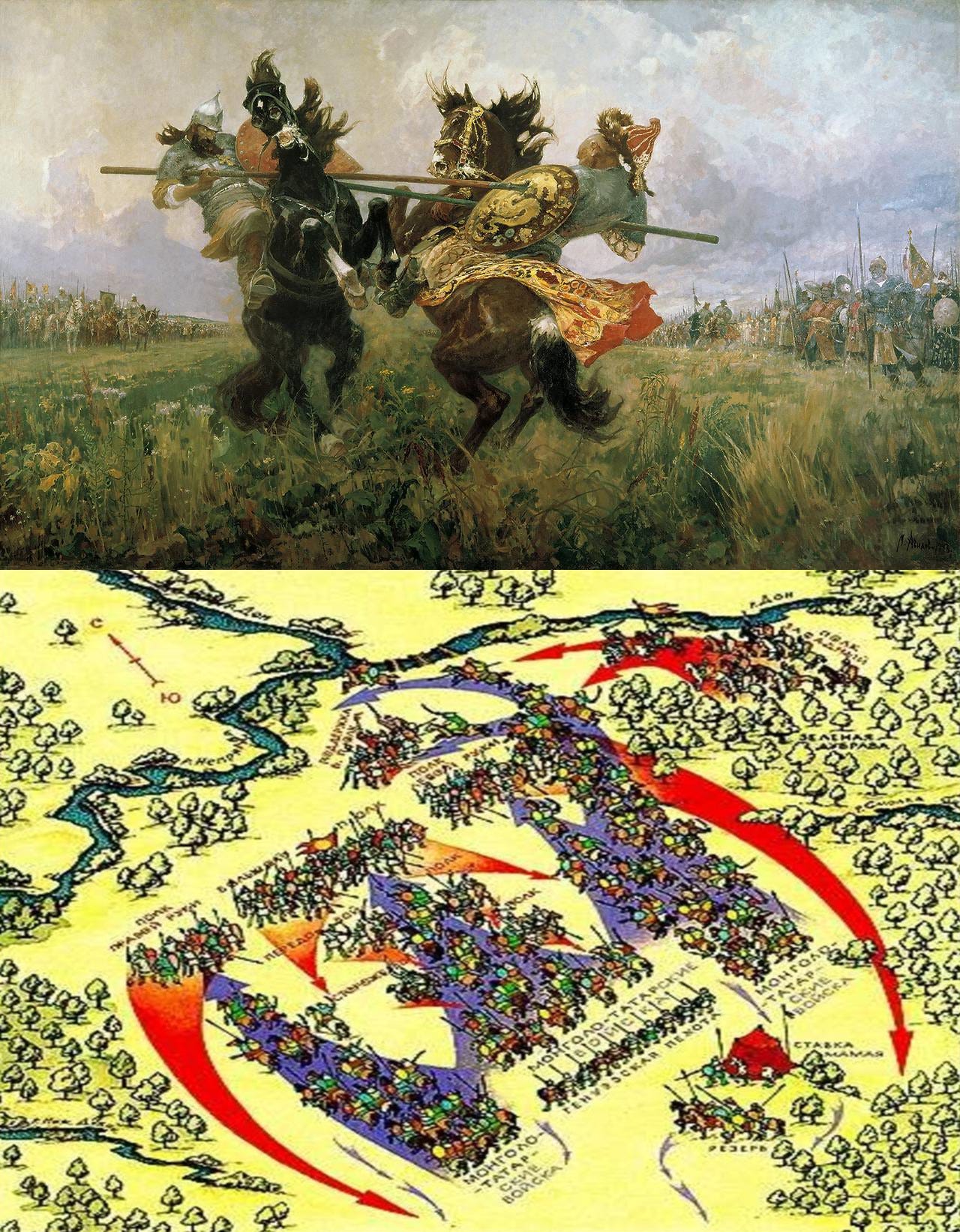Ritual War: Chapters III & IV, by Nicholas Kozlov
Chapter 3: Khazarian Dispersion, Chapter 4: A War Commissioned
Chapters three and four of Ritual War by Nicholas Kozlov detail the events after Khazaria’s fall following the military campaigns of Russian Grand Prince Sviatoslav, as well as the Caucasus Wars of the 19th century. To grasp the context of this original translation, it is highly recommended to first read Chapter 1 and Chapter 2 of this book.

Chapter III: Khazarian Dispersion
After suffering a crushing defeat from Svyatoslav’s troops in 965 AD, the Khazar state, according to Arthur Koestler:
"Emerged from this trial greatly weakened, but there is no doubt that within its now too narrow borders, it persisted for at least another two hundred years, i.e., until the middle of the 12th century, and possibly until the middle of the 13th century" (Arthur Koestler, The Thirteenth Tribe, St. Petersburg 2001, p. 131).

The downfall of the Khazar Khaganate triggered a wave of emigration to Eastern Europe, where, as Koestler believes, the Khazars laid the foundation for what is now known as Ashkenazi (Germanic) Judaism, i.e., Judaism in its modern form.
‘The main route of the Khazar exodus led westward, but some did not move anywhere and remained in Crimea and the Caucasus, where they formed Jewish enclaves that survived until modern times (...). In the ancient Khazar fortress of Tamatarkha (Taman) on the eastern shore of the Kerch Strait, there supposedly existed a dynasty of Jewish princes who ruled in the 15th century under the protection of the Genoese Republic and later under the Crimean Tatars. The last in the dynasty, Prince Zakhar, negotiated with the Moscow prince, who invited Zakhar to Moscow and offered privileges of a Russian boyar in exchange for baptism. Zakhar refused, but in other cases, the "ascent of Khazar-Jewish elements to high positions in the Moscow state may have been one of the factors that led to the appearance of the 'Judaizing heresy' among Russian priests and nobles in the 16th century (...). The remnants of the Khazar people — the 'mountain Jews' in the northeast Caucasus, have preserved the customs of those ancient times when their compatriots headed westward. They number around 8 thousand and live alongside descendants of other ancient tribes — the Kipchaks and Oghuz. They call themselves 'mountain Jews' and speak the language of the Tats, borrowed from another Caucasian tribe; little else is known about them’ (Koestler, p. 148).
The descendants of Khazar Jews played a provocative role in princely feuds and in inciting Russian princes against each other. The Russian Orthodox Church glorified the ‘martyr at the hands of Jews,’ the venerable Eustratius, the Pechersky ascetic and martyr.

During the invasion of the Polovtsian Khan Boniak in 1096, incited by Jews against the Pechersk Monastery, Eustratius was captured, according to the Kiev Caves Patericon, with 30 laborers and 20 Kievan citizens and sold into slavery to a Jew in Chersonesos, who, due to Eustratius's steadfastness in the Orthodox faith and refusal to convert to Judaism, tortured and starved him. Finally, the criminals crucified him on Easter, just as their ancestors crucified the Savior, and threw his dead body into the sea. Saint Eustratius's body was found by Christians through miracles attributed to him and transported to Kiev, where his relics are still preserved today. Jewish merchants, using trade and caravan routes, brought the Tatar-Mongol hordes of Batu to Christian Rus'. Jews served as trade and economic advisors to the Tatars, leading them to many cities and monasteries, assisting in collecting tribute from the Russian people.

In the year 1321, a chronicler notes: "From the Horde came to Kashin Tayanchar, a Tatar with a Jew, a tax collector (ransomer), and they brought much trouble to Kashin" (Russian Chronicle according to the Nikon list, volume 3, p. 125).

Talmudic influence could also be seen in the important Battle of Kulikovo, which marked the beginning of Russia's liberation from Tatar rule in 1380 AD. A little-known aspect of the conflict is that Venetian and Genoese infantry fought alongside the Golden Horde warlord Mamai against the Russians. Historians recognize that Italian mercenaries were financed and transported to Russia via Crimea by Venetian Jews, the largest purchasers of Russian slaves acquired with the assistance of the Tatars. This could almost be seen as a strategic wartime investment in the Golden Horde against an emerging Russia.

There was a third wave of migration. Koestler suggests a possible connection between the Assassins and the Khazars, stating:
’In the 12th century, a messianic movement emerged in Khazaria, a rudimentary attempt at a Jewish 'crusade' to conquer Palestine by force of arms. The initiator of the movement was a Khazar Jew named Solomon ben Duji (or Ruhi, or Roy), aided by his son Menahem and a scribe from Palestine. 'They wrote letters to all Jews, near and far, in all lands around (...). They said that the time had come when God would gather Israel, His people, from all lands to Jerusalem, the holy city, and that Solomon ben Duji was Elijah, and his son was the Messiah'. Although the movement originated in Khazaria, its center soon shifted to Kurdistan. There, David gathered a significant military force - presumably from local Jews reinforced by Khazars - and seized the strategic fortress of Amadi northeast of Mosul. From there, he hoped, perhaps, to reach Edessa, break through Syria with battles, and reach the Holy Land. All this might not have been as quixotic as it seems now, given the constant feuds between different Muslim armies and the gradual disintegration of Crusader strongholds in the Middle East. Moreover, some Muslim commanders apparently harbored plans for a kind of Jewish crusade against Christians’ (Koestler, pp. 138-139).
It is conceivable, however, that regarding who devised the plans and for whom they were intended to be executed, the situation was quite the opposite. Through Asia and North Africa, leveraging connections with the Assassins and the Templars, Khazar Jews could have reached Spain, intermixed with Sephardic (Spanish) Jews, and settled in England. It is quite probable to assume that the fourth, maritime migration route of Khazar Jews from the Caucasus and Crimea passed through Turkey, Cyprus, Sicily, and further into England and Europe. This is currently the main route of Chechen drug trafficking. Hodgson reports that the leader of the European Crusaders, ‘Richard the Lionheart, was accused of teaching assassins, imitating the Mountain Elder, and considered it necessary to acknowledge the guilt of several people in England in such actions directed against his person’ (Marshall Hodgson, The Secret Order of Assassins, p. 147).




